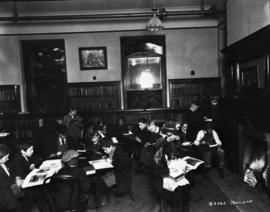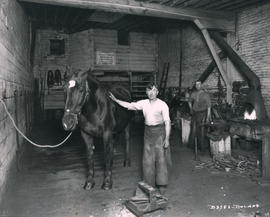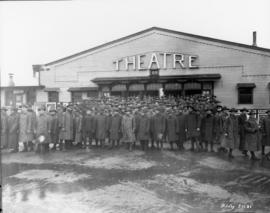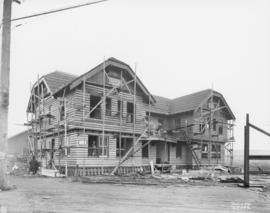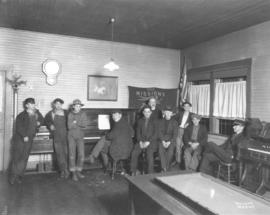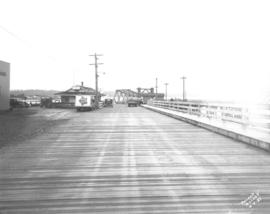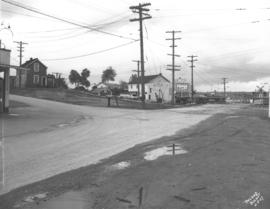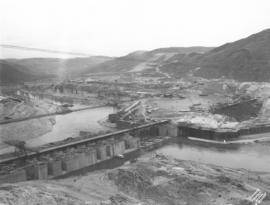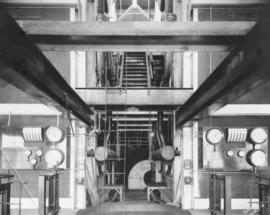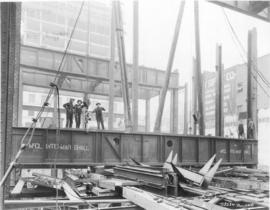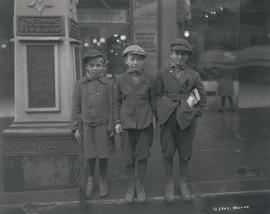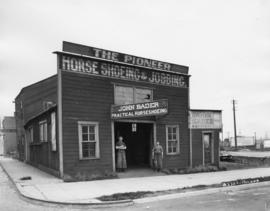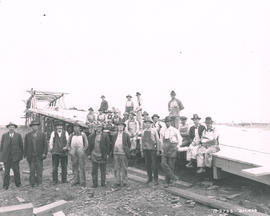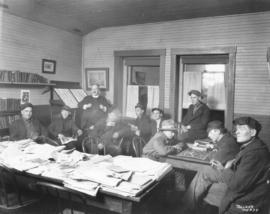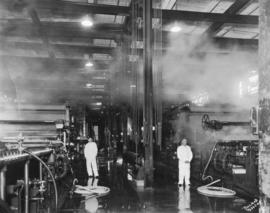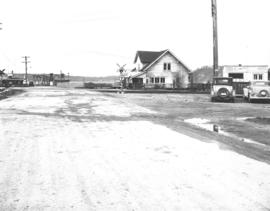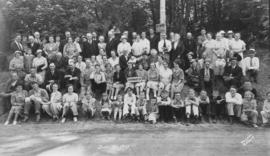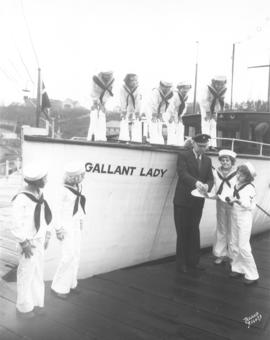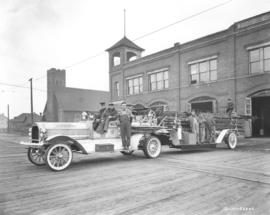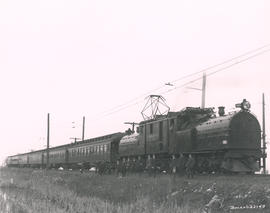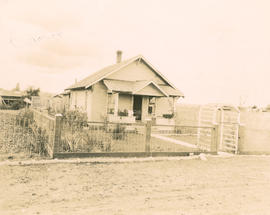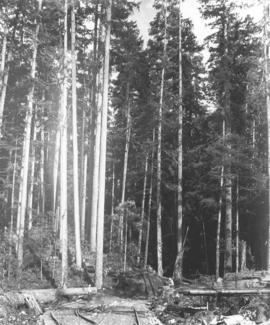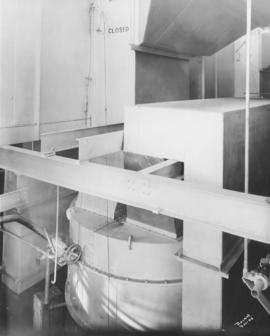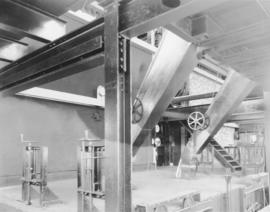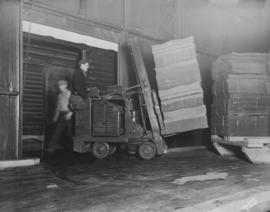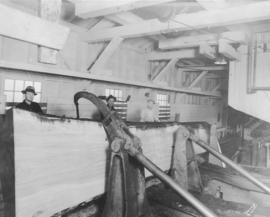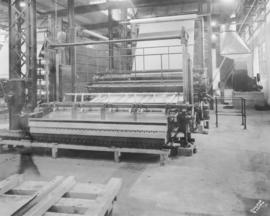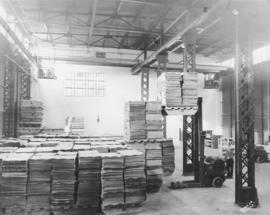- Item
- 1920-10
Part of Marvin Boland Photographs
Warmed by a roaring fire in the fireplace, several children enjoy a good book in the children's reading room at the original Carnegie building of the Tacoma Public Library. During Childrens' Book Week, November 15-20th 1920, the room would be the center of the final oral contest of the campaign to introduce youngsters to the classics. 20,000 children in Pierce County would be participating in the written and oral competition based on "My Favorite Library Book." The prizes were beautifully bound copies of children's classics. The goal was to introduce great literature into the home, replacing the mass produced "dime novels." The Carnegie building was built in 1903 with funds donated by industrialist Andrew Carnegie. It was designed by the New York architectural firm of Jardine, Kent and Jardine. BU-11,819, G39.1-076, TPL-3846 (TDL 10/31/1920, pg. E-9)
Public libraries--Tacoma--1920-1930; Tacoma Public Library (Tacoma); Children--Tacoma--1920-1930; Reading--Tacoma--1920-1930; Books; Fireplaces--Tacoma--1920-1930;
